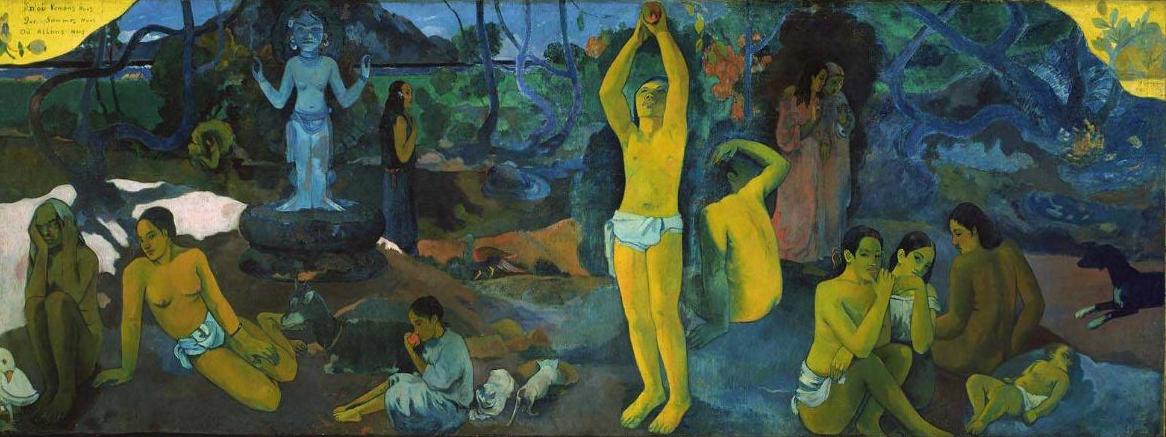In Homo Aestheticus (University of Washington Press, 1995), Ellen Dissanayake argues that art was central to the emergence, adaptation and survival of the human species, that aesthetic ability is innate in every human being, and that art is a need as fundamental to our species as food, warmth or shelter.
What art “makes special”
This aesthetic ability, she says, enabled us to ‘bracket off’ the things and activities that were important to our survival, separate them from the mundane, and make them special. We took the objects and practices involved in marriage, birth, death, food production, war and peacemaking and enhanced them to make them more attractive and pleasurable, more intriguing and more memorable. We invented dance, poetry, charms, spells, masks, dress and a multitude of other artifacts to make these associated activities, whether hauling nets or pounding grain, more sensual and enjoyable, to promote cooperation, harmony and unity among group members, and to also enable us to cope with life’s less expected or explicable events.
Methods of “making special” derived from our evolutionary inheritance
Using her own lived, anthropological experience and a wide knowledge of contemporary literature on the subject, she provides many examples of how this “making special” is done. She argues that in making things special we drew on those aspects of the world that evolution had led us to find attractive and to prize: visual signs of health, youth and vitality such as smoothness, glossiness, warm colors, cleanness and lack of blemishes; vigor, precision, agility, endurance and grace of movement; in sounds - sonority, vividness, rhythmicity, resonance, power; in the spoken word repetition of syllables, verses and key words, the use of antiphony, alliteration, assonance and rhyme. She adds to these pattern, contrast, balance, roundness, length, geometric shapes such as circles, squares, triangles, diagonals, horizontals and verticals) - and more complex forms arising from variation on a theme, or to put it the other way round, the absorbing of asymmetry and difference within a wider, encompassing pattern - the taming of the unruly wild. As such, she argues that art springs from the same sources and interacts with the same physiology as everyday life, but because it is so crafted, more intensely.
Art as a normal and necessary part of human life
In Homo Aestheticus, Dissanayake argues that Art is not an ornamental and dispensable luxury, but intrinsic to our species. And once we recognize this truth, she says “each one of us should feel permission and justification for taking the trouble to live our life with care and thought for its quality rather than being helplessly caught up in the reductive and alienating pragmatic imperatives of consumer and efficiency-oriented and “entertain-me” society.”
“Art is a normal and necessary behavior of human beings and like other common and universal occupations such as talking, working, exercising, playing, socializing, learning, loving, and caring, should be recognized, encouraged and developed in everyone. Via art, experience is heightened, elevated, made more memorable and significant”
Included in the book are more than 16 pages of references covering the emergent fields of Bioaesthetics, Neuroaesthetics and Psychobiology.
what is art for? is the title of another book by ellen dissanayake (this links to her website):

and you will note the nice 'coincidence' that the author uses the same painting by gauguin as the one that started me on this whole thread...;-)

